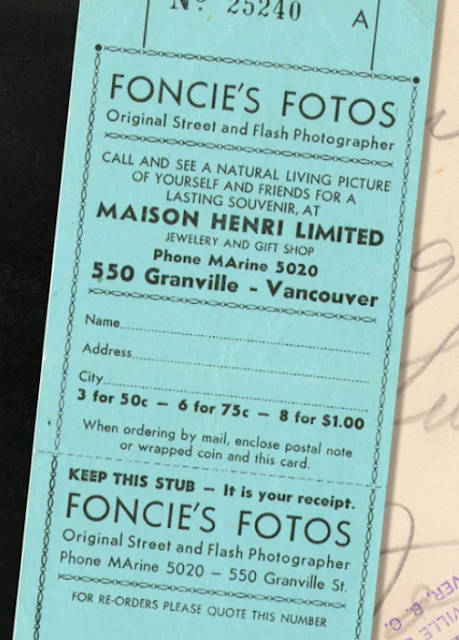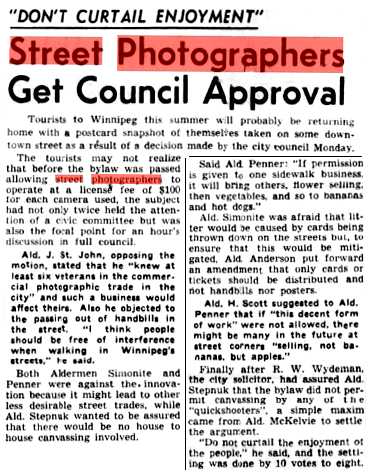One day in the late 1970s I was at home when Mom called me from a small art gallery at the local shopping mall. She had spotted a print she loved and wanted me to see it. When I arrived I agreed that someone in our family ought to have it, and was surprised and delighted when Mom offered to buy it for me. I had the print framed and have enjoyed it for decades.
A Helping Hand by William Biddle
Artist William Biddle has a gallery in Dunnville, Ontario. He trained for five years at the Art Students League in New York City prior to a 26-year career as a commercial illustrator in Toronto. Now approaching 80, he takes a nostalgic approach to his work, and says he likes to include a story in his paintings. Much of his recent work appears in calendars. Nostalgia sells.
Mom recognized the story this painting told. The house is reminiscent of 400 St. Charles Street, of course, but it was the one kid helping the other that clinched it for Mom. A family photo came to mind immediately; the parallel was obvious:
Twins Karen and Ruth play boats, about 1967.
Wally had built the ship, but milk carton boats floated well, too.
Life imitates art and art imitates life. When I see the picture I am reminded of an idyllic childhood and the family home we all loved. It never fails to make me smile.
400 St. Charles Street
Oscar Wilde wrote that “life imitates art far more than art imitates life” (The Decay of Lying, 1891). In other words, art affects the way we look at the world around us, and artists help us see the beauty in nature.
Winnipeg artist David Ristau would probably feel flattered by the thought, but would agree with the Greeks, who believed that art imitates life. Ristau has written that he is inspired by nature and the scenes around him. (As a bus driver, he is also inspired by buses!)
Blizzard of ’66, by David Ristau
Ristau described this second print in my collection as follows:
I painted this picture in the summer of 1997, the summer following the blizzard and the flood of the century. I had painted snow pictures before. Mountains of snow and ice somehow represent Manitoba to me more than even the railways or endless flatlands. Perhaps being born in Winnipeg and never having gone anywhere warm in the winter has left an indelible impression on me.
The blizzard of ’66, having time and nostalgia on its side, will probably always be remembered as the worst. Even though Winnipeg is renowned for its snow removal, the vision of the trolley buses that struggled to the end and finally had to concede to nature, reminds us of its power. Then for a day or two we have peace and tranquility.
Why do Winnipeggers love scenes like this, someone from California might ask? Perhaps it is that moment of catharsis we get when it releases us from the tensions of everyday life. Or does it remind us of our indomitable spirit? The stories of how we dug ourselves out in a matter of days and carried on as usual amaze our southern relatives. This is what we remind them of when they come to visit us in October and complain how cold it is here.
This style of painting is always experimental to me. It is not entirely predictable and difficult to do with acrylic paint. Many people have remarked to me that they haven’t seen anything like it before and want to know how I do it. It was an enjoyable painting for me to do because although I still included a lot of detail it allowed me to loosen up a bit.
Ristau’s work certainly does imitate life. Blizzard of ’66 is based on an actual photograph from the Winnipeg Free Press.
Portage Avenue and Donald Street, March 5, 1966.
Photo by Jack Ablett, Winnipeg Free Press.
I am one of those Winnipeggers who is intrigued by paintings of snow, as Ristau has observed. Snow is just so, well, familiar. Many of us remember this particular storm as a benchmark for Winnipeg blizzards.
The blizzard of Friday, March 4, 1966 is especially memorable to me because the storm struck one day before my 9th birthday. March 5 was a bright, sunny Saturday, and Mom hosted a great birthday party for her twins. Many little friends attended, but parents had been unable to get out to shop for gifts, and Karen and I were delighted to receive several dollar bills instead.
The blizzard was unique. It was expected to bypass Winnipeg to the south as it headed east, but surprised everyone when it turned north. There were reports of thunder and lightning during the storm, which only added to the drama. Another 7 mph more and the wicked winds would have reached hurricane status.
A local weather forecaster’s blog gives a thorough account of the blizzard:
Friday March 4th 1966 - The Great Blizzard arrives in southern Manitoba
By the time Winnipeggers awoke Friday morning March 4th, blizzard conditions were widespread across the city and throughout the Red River valley. The pressure gradient between the intensifying storm system over southern Minnesota and the high pressure ridge in Saskatchewan was producing incredibly strong northerly winds through the Red River valley, with sustained wind speeds of 70-80 km/h in Winnipeg, gusting as high as 113 km/h (70 mph, 61 knots). The combination of the severe winds and heavy snowfall from the storm was producing severe blowing and drifting snow with whiteout conditions across the city and valley. Visibility at Winnipeg airport would drop to zero by 4 am Friday, and would stay at zero for 14 consecutive hours into the evening.
The slow moving storm system would loop over Minnesota on March 4th, maintaining blizzard conditions over Winnipeg for almost 20 straight hours, and up to 36 hours over portions of the southern Red River valley. The storm dumped 35.6 cm of snow in Winnipeg that day, the second heaviest one-day snowfall on record in the city (the greatest one-day snowfall of 38.1 cm fell on the exact same date, March 4th, back in 1935). The heavy snowfall combined with storm force winds led to massive drifts in the city, some as high as rooftops of houses. People who ventured to work or stores in the morning were trapped as roads became impassable.
City buses were shut down by 11 am as streets became blocked with drifts and stranded vehicles. Hundreds of people were stranded downtown at the Bay and Eaton’s department stores, which became storm shelters for people for the night until they could find a way home. The city was paralyzed through the weekend into Monday before things could finally get cleared up for the new work week. At least two deaths in the city were blamed on the storm due to heart attacks, and snow removal costs for Winnipeg were upwards of $1 million (1966 dollars), a huge sum back then.
Similar scenes were observed throughout the Red River valley and North Dakota, with rural areas immobilized for days by massive drifts left by the blizzard. 30-50 cm of snow fell throughout the Red River valley and southeast Manitoba during the blizzard, with up to 70 cm recorded in Grand Forks from March 2nd to 5th. 50 years later, the Blizzard of 1966 still ranks as one of the most severe blizzards ever to hit Winnipeg and the Red River valley, as well as North Dakota.
City buses were shut down by 11 am as streets became blocked with drifts and stranded vehicles. Hundreds of people were stranded downtown at the Bay and Eaton’s department stores, which became storm shelters for people for the night until they could find a way home. The city was paralyzed through the weekend into Monday before things could finally get cleared up for the new work week. At least two deaths in the city were blamed on the storm due to heart attacks, and snow removal costs for Winnipeg were upwards of $1 million (1966 dollars), a huge sum back then.
Similar scenes were observed throughout the Red River valley and North Dakota, with rural areas immobilized for days by massive drifts left by the blizzard. 30-50 cm of snow fell throughout the Red River valley and southeast Manitoba during the blizzard, with up to 70 cm recorded in Grand Forks from March 2nd to 5th. 50 years later, the Blizzard of 1966 still ranks as one of the most severe blizzards ever to hit Winnipeg and the Red River valley, as well as North Dakota.
Note: A similarly strong blizzard slammed Winnipeg and southern Manitoba on November 7-8, 1986, dumping 35 cm of snow on the city along with 70-90 km/h winds bringing the city to a standstill. Unlike the 1966 blizzard however, the storm occurred late Friday through Saturday, was well forecast, and did not strand as many people as the 1966 blizzard did. Also, the blizzard of April 4-7, 1997 was another severe blizzard to hit the Red River valley. That storm was a longer duration event, lasting 3 full days, and dumping a total of 48 cm of snow on Winnipeg along with blizzard conditions for a full 27 hours. That blizzard eventually led to the disastrous “Flood of the century” that spring over the Red River valley.
Blizzard of 1966 - by the Numbers (Winnipeg)
- Number of consecutive hours with blizzard conditions: 18 (2 am - 9 pm)
- Number of consecutive hours with zero visibility: 14 (4 am - 7 pm)
- Wind speeds: North 70-80 km/h sustained, with gusts over 100 km/h
- Peak gust: 113 km/h (70 mph, 61 knots)
- Snowfall: 35.6 cm (14 inches)
- Lowest central pressure of storm: 983 mb on the 3rd, 987 mb on the 4th
- Snow depth: went from 30 cm pre-storm to 66 cm after storm
- Snowdrifts: 1-3 meters
- Fatalities: 2 (heart attacks)
- Cost of clean up: $1 million (1966 dollars)
Note: Official blizzard conditions are defined as a visibility of 400 meters or less and wind speeds of 40 km/h or more, lasting for at least 4 hours.
LINKS
Artist William Biddle:
https://www.sachem.ca/whatson-story/6159399-artist-shares-his-advice-on-the-trade
Blizzard of ’66:
1) CBC video:
http://www.cbc.ca/news/canada/manitoba/cbc-manitoba-vault-archives-1966-winnipeg-blizzard-1.3468613
2) From a weather blog:
http://robsobsblog.blogspot.ca/2016/03/blast-from-past-50th-anniversary-of.htmlhttp://timemachine.siamandas.com/PAGES/winnipeg_stories/BLIZZARD_1966.htm
Back to Top ↑





















